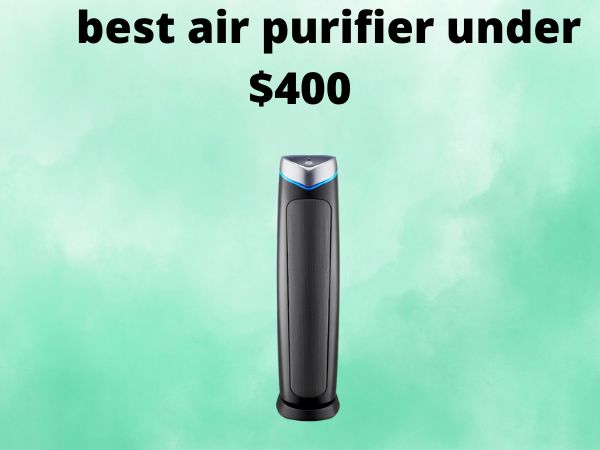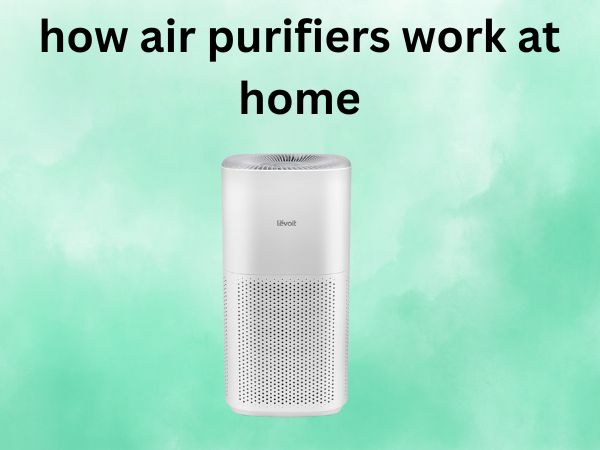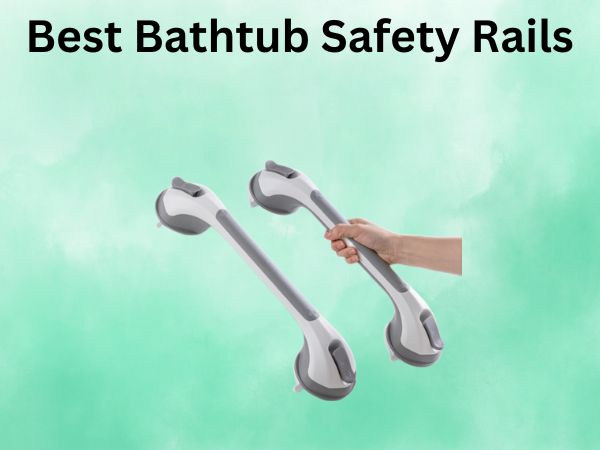How to Use a Dehumidifier [The Complete Guide]
Have you ever walked into your basement and been hit with that unmistakable musty smell? Or noticed your bathroom walls are perpetually damp? Perhaps you’ve found mold growing in corners of your home you didn’t even know existed. If any of this sounds familiar, a dehumidifier might be the solution you’ve been looking for. But how exactly do you use one of these magical moisture-removing machines? I’ll walk you through everything you need to know about using a dehumidifier effectively, from setup to maintenance and beyond.
Table of Contents
Understanding What a Dehumidifier Does
Before diving into the how-to, let’s quickly understand what we’re working with. A dehumidifier is essentially a household appliance that reduces the level of humidity in the air. Think of it as the opposite of a humidifier. While that might sound simple, the benefits are surprisingly far-reaching.
How Excess Humidity Affects Your Home
Too much moisture in your air isn’t just uncomfortable—it’s potentially harmful. When humidity levels climb above 50-60%, you’re creating the perfect breeding ground for mold, mildew, dust mites, and other allergens. Your walls, furniture, and even books can start to warp or develop water damage. Electronics may corrode faster, and that musty smell? That’s the scent of microscopic organisms thriving in your humid environment.
I once ignored the humidity in my basement until I discovered my favorite guitar had developed mold on its case. Trust me, you don’t want to learn this lesson the hard way!
Benefits of Using a Dehumidifier
Using a dehumidifier properly can:
- Prevent mold and mildew growth
- Reduce musty odors
- Alleviate allergy symptoms
- Help clothes dry faster
- Reduce dust in your home
- Protect wooden furniture, instruments, and electronics
- Make your space feel more comfortable (humid air feels warmer and stickier)
- Lower air conditioning costs (dryer air feels cooler)
Think of a dehumidifier as a health investment for both you and your home. It’s like giving your house a chance to breathe properly.
Choosing the Right Dehumidifier for Your Space
Before you can use a dehumidifier effectively, you need to make sure you’ve got the right one for your needs. Using an underpowered dehumidifier in a large space is like trying to empty a swimming pool with a teaspoon—technically possible, but hardly efficient.
Sizing Your Dehumidifier Correctly
Dehumidifiers are typically rated by how many pints of moisture they can remove from the air in 24 hours. Here’s a simple guide:
- Small rooms (up to 300 sq ft): 30-pint dehumidifier
- Medium rooms (300-500 sq ft): 50-pint dehumidifier
- Large rooms (500-800 sq ft): 60-pint dehumidifier
- Very large rooms (800+ sq ft): 70-pint dehumidifier or larger
But square footage isn’t the only consideration. If you live in an extremely humid climate or are dealing with a very damp space (like a flooded basement), you might want to size up. Remember, it’s better to have too much dehumidifying power than too little.
Different Types of Dehumidifiers
Not all dehumidifiers work the same way, and choosing the right type can make a big difference in effectiveness.
Refrigerant Dehumidifiers
These are the most common type. They work by drawing humid air over cold coils, causing moisture to condense (think about water droplets forming on a cold glass on a hot day). The water drips into a collection tank, and drier air is released back into the room.
Refrigerant dehumidifiers work best in warmer environments (above 65°F/18°C) and are generally more energy-efficient for everyday use.
Desiccant Dehumidifiers
Instead of using refrigeration, these units pass air through a rotating wheel of moisture-absorbing material. They work effectively at lower temperatures, making them ideal for unheated spaces like garages or for winter use.
They typically use more energy but can operate effectively in temperatures as low as 30°F/-1°C where refrigerant models would freeze up.
Whole-House Dehumidifiers
These systems integrate with your home’s HVAC system to control humidity throughout your entire house. They’re more expensive but offer convenience and consistent humidity control without having to manage multiple portable units.
Setting Up Your Dehumidifier for Optimal Performance
You’ve selected your dehumidifier—now let’s get it working effectively. Proper placement and setup are crucial for getting the most out of your machine.
Finding the Perfect Location
Location matters tremendously for a dehumidifier’s effectiveness. Here are some key placement tips:
- Center of the room: Place the dehumidifier away from walls and furniture to allow for maximum air circulation. Ideally, position it in the center of the room if possible.
- Near the moisture source: If you’re targeting a specific problem area (like a damp corner), place the unit nearby—but not so close that it can’t get proper airflow.
- Close doors and windows: Dehumidifiers work best in enclosed spaces. Keep doors and windows closed when the unit is running to prevent it from trying to dehumidify the entire neighborhood!
- Clearance matters: Most dehumidifiers need at least 6-12 inches of space on all sides for proper air intake and exhaust. Check your model’s manual for specific requirements.
- Elevated position: For basements that occasionally flood, consider placing the dehumidifier on a small table (as long as it’s stable). This protects the unit from water damage.
I learned this the hard way when I placed my first dehumidifier directly against a wall in my bathroom. It ran constantly but never seemed to make a difference until I moved it to a more central location with better airflow.
Proper Setup Procedures
Once you’ve found the perfect spot, follow these steps for initial setup:
- Remove packaging materials: Make sure all protective films, tape, and packaging materials are removed.
- Let it settle: If the unit has been tilted during transport, let it stand upright for at least 24 hours before turning it on. This allows the refrigerant to settle properly.
- Check the filter: Make sure the air filter is properly installed before first use.
- Plug directly into the wall: Avoid using extension cords or power strips when possible, as dehumidifiers can draw significant power.
- Set up drainage: Decide whether you’ll be emptying the water collection bucket manually or setting up continuous drainage (more on this later).
Operating Your Dehumidifier Effectively
Now that your dehumidifier is in place, it’s time to turn it on and get it working. But what settings should you use? And how do you know if it’s working properly?
Setting the Ideal Humidity Level
The EPA recommends keeping indoor humidity between 30-50% to prevent mold growth while still maintaining comfort. Most dehumidifiers have a built-in humidistat that allows you to set your desired humidity level.
If you’re not sure where to start:
- 45-50% is ideal for most living spaces
- 40-45% if you have allergies
- 30-40% during cold winter months to prevent window condensation
When you first begin using your dehumidifier in a very damp space, you might want to set it to continuous operation for the first few days to bring the humidity down quickly, then adjust to your target level.
Understanding Control Features
Modern dehumidifiers come with various features that make operation easier:
- Humidistat: This measures the humidity in the room and turns the unit on and off to maintain your set level.
- Fan speed: Higher speeds remove moisture faster but create more noise. Lower speeds are quieter but less efficient.
- Timer function: This allows you to program the dehumidifier to run for a specific period or at certain times of day, saving energy.
- Auto-defrost: Essential for refrigerant models in cooler environments, this prevents ice buildup on the coils.
- Auto-restart: Restores your previous settings after a power outage.
- Water level indicator: Shows how full the collection bucket is.
- Auto-shutoff: Turns the unit off when the collection bucket is full to prevent overflow.
- Continuous drainage option: Allows you to attach a hose for automatic water removal instead of manually emptying the bucket.
Speaking of water removal, you have two main options:
- Manual bucket emptying: Check the bucket daily in very humid conditions or every few days in moderately humid spaces. Some units have buckets with convenient handles or splash guards.
- Continuous drainage: If your unit has this feature, attach a garden hose to the designated port and position the other end in a floor drain, utility sink, or sump pump. Make sure the hose runs downhill from the dehumidifier for proper gravity flow.
I prefer continuous drainage whenever possible—it’s one less thing to remember and prevents the unit from shutting off when the bucket fills up while you’re away.
Maintenance and Care for Longevity
A well-maintained dehumidifier can last for many years, while a neglected one might fail within months. Regular maintenance isn’t just about longevity—it also ensures your unit runs efficiently and effectively.
Daily and Weekly Maintenance Tasks
- Check the water collection bucket: Empty it before it’s completely full to prevent shutoffs and potential overflow.
- Wipe down the exterior: Use a damp cloth to remove dust from the outside of the unit, especially around air intake and exhaust areas.
- Inspect the air filter: Most units have a simple air filter that should be checked weekly. Hold it up to a light source—if you can’t see light through it, it needs cleaning.
- Check for obstructions: Make sure nothing is blocking the air intake or exhaust areas.
Monthly and Seasonal Care
- Clean the air filter: Most filters can be rinsed with warm water and mild soap. Let it dry completely before reinstalling.
- Inspect and clean coils: If accessible in your model, check the cooling coils for dust buildup and clean according to the manufacturer’s instructions.
- Check the drainage system: If using continuous drainage, inspect the hose for mold, algae, or blockages.
- Clean the water bucket: Even if you use continuous drainage, the bucket can develop mold and bacteria. Wash it with a mild bleach solution (1 tablespoon bleach to 1 gallon of water) monthly.
- Check the humidity sensor: If your readings seem off, the sensor might need cleaning. Consult your owner’s manual for specific instructions.
- End-of-season care: If you only use your dehumidifier seasonally, perform these additional steps before storage:
- Run the unit on fan-only mode for 24-48 hours to dry internal components
- Clean all filters and the water bucket
- Store in a dry, clean area, preferably covered to prevent dust buildup
I once skipped end-of-season cleaning and stored my dehumidifier in the garage over winter. When I pulled it out the following spring, I found mold had grown inside the bucket and spread to some internal components. Trust me—the few minutes of cleaning before storage is worth avoiding that nightmare!
Troubleshooting Common Dehumidifier Problems
Even with proper maintenance, you might occasionally run into issues. Here’s how to troubleshoot the most common problems:
When Your Dehumidifier Isn’t Collecting Water
If your unit is running but not collecting water, consider these possibilities:
- Humidity is already low: Check the actual humidity level in the room. If it’s already at or below your set point, the dehumidifier won’t collect much water.
- Temperature is too low: Refrigerant dehumidifiers work poorly below 65°F/18°C. If your space is cool, consider a desiccant model instead.
- Unit is too small: The dehumidifier might be undersized for the space. Check the capacity rating against your room size.
- Poor air circulation: Make sure the unit has adequate clearance on all sides.
- Dirty filter or coils: Restricted airflow from dirt buildup can significantly reduce effectiveness.
- Refrigerant leak: If the unit has stopped collecting water suddenly and you’ve ruled out other causes, it might have lost its refrigerant. This typically requires professional repair.
Dealing with Unusual Noises
- Rattling or vibrating: The unit might not be on a level surface. Make sure all feet are making solid contact with the floor.
- Gurgling: This is often normal—it’s the sound of refrigerant flowing through the system or water dripping into the collection bucket.
- Clicking: Occasional clicking when the compressor cycles on and off is normal. Constant clicking might indicate a problem with the compressor or control system.
- Scraping or grinding: Turn off the unit immediately—this could indicate a problem with the fan or compressor that needs professional attention.
Energy-Saving Tips for Dehumidifier Use
Dehumidifiers can consume significant electricity, but these tips can help reduce your energy costs:
- Focus on problem areas: Rather than trying to dehumidify your entire home, concentrate on problem areas like basements and bathrooms.
- Use the humidity control: Don’t run the unit at full power continuously—set the humidity control to maintain 45-50% instead of running it constantly.
- Seal the space: Fix leaky windows, doors, and other sources of humid outside air that make your dehumidifier work harder.
- Clean regularly: A clean dehumidifier with unobstructed airflow works more efficiently.
- Consider timing: Run your dehumidifier at night when electricity rates might be lower (check with your utility provider).
- Look for ENERGY STAR models: These use about 15% less energy than standard models.
- Coordinate with your AC: Air conditioners also remove some moisture. During hot, humid weather, using your AC and dehumidifier together strategically can improve comfort while managing energy use.
I reduced my energy bill by simply moving my dehumidifier away from my dryer vent, which was constantly pumping humid air into the space the dehumidifier was trying to dry!
Frequently Asked Questions
1. How often should I empty the water collection bucket?
This depends entirely on the humidity level in your space and the capacity of your dehumidifier. In very humid conditions, you might need to empty it daily or even twice daily. In moderately damp spaces, every 2-3 days might be sufficient. Many modern units have an auto-shutoff feature when the bucket is full, but it’s best to empty it before this happens to maintain continuous operation.
2. Can I use a dehumidifier in any room of my house?
While you technically can use a dehumidifier anywhere, they’re most beneficial in naturally damp areas like basements, bathrooms, laundry rooms, and crawl spaces. They’re also particularly useful in any room that has experienced water damage or shows signs of excess moisture. Remember that different rooms may require different capacity units based on their size and humidity levels.
3. Does a dehumidifier help with allergies?
Yes! By reducing humidity levels below 50%, dehumidifiers create an environment that’s less hospitable to common allergens like dust mites, mold, and mildew. Many allergy sufferers notice significant relief when proper humidity levels are maintained, especially those sensitive to mold spores. However, a dehumidifier shouldn’t replace an air purifier if you have severe allergies, as it doesn’t filter pollen or pet dander effectively.
4. How can I tell if my dehumidifier is working properly?
A properly functioning dehumidifier should collect water in its bucket (unless your room is already at the target humidity level), reduce the feeling of dampness in the air, and gradually eliminate musty odors. Most units have a humidity display—if the reading is decreasing over time, that’s a good sign. You can verify the accuracy with a separate hygrometer if you’re unsure. Also, listen for the sound of the compressor running (in refrigerant models) and feel for air movement from the exhaust.
5. Is it expensive to run a dehumidifier continuously?
The cost varies based on your electricity rates, the size of the unit, and how efficiently it runs. A medium-sized (50-pint) ENERGY STAR dehumidifier typically uses about 500-700 watts when the compressor is running, similar to a small window air conditioner. At the U.S. average electricity rate (about $0.14 per kWh), this translates to roughly $2-$3 per day if running continuously. However, once your space reaches the target humidity level, the unit will cycle on and off rather than run continuously, significantly reducing energy consumption and cost. Using the built-in humidistat to maintain a specific humidity level rather than running continuously is much more economical.
Conclusion
Using a dehumidifier effectively doesn’t have to be complicated. By selecting the right unit for your space, positioning it correctly, understanding the settings, and performing regular maintenance, you can create a more comfortable, healthier home environment. Remember that the ideal indoor humidity is between 30-50%—this range discourages mold growth and dust mites while still feeling comfortable.
Don’t wait until you see water stains on your ceiling or smell that distinctive musty odor to take action. A properly used dehumidifier is preventative care for both your home and your health. And who doesn’t love the feeling of walking into a perfectly comfortable room where the air feels just right?
Whether you’re battling basement dampness, bathroom humidity, or just live in a naturally humid climate, your dehumidifier can become one of your home’s most valuable appliances—if you use it wisely.






